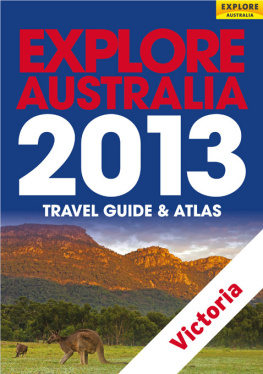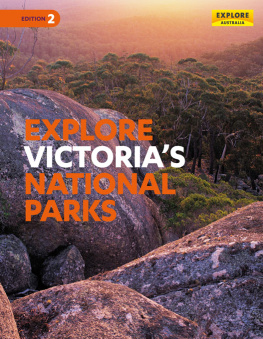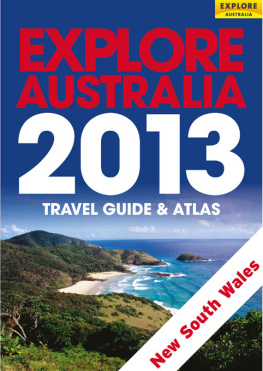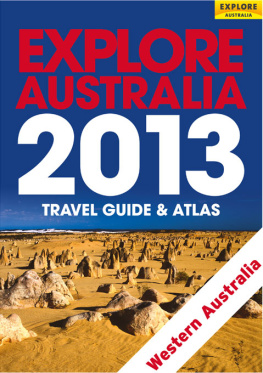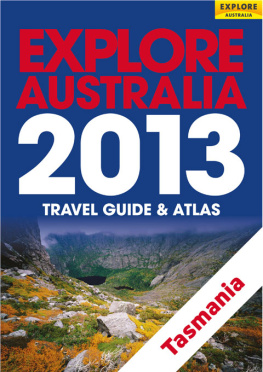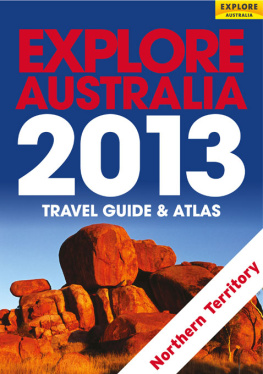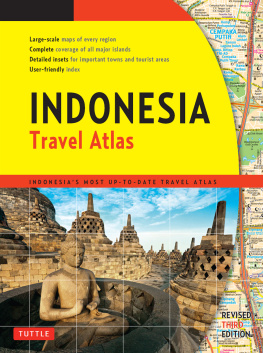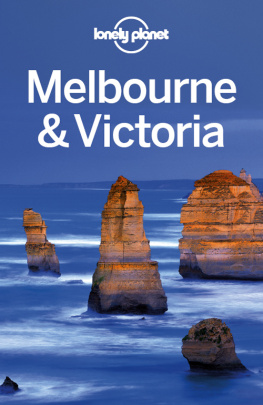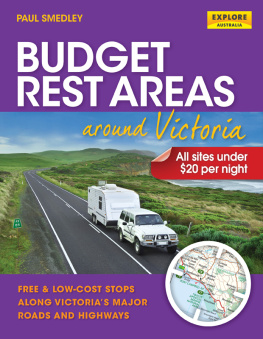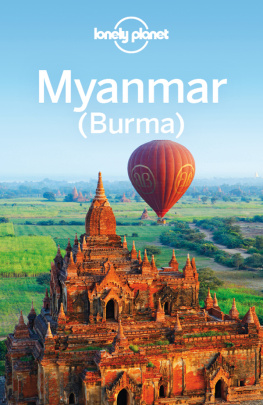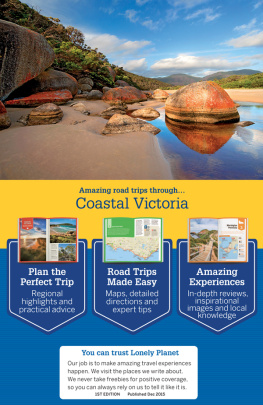CONTENTS
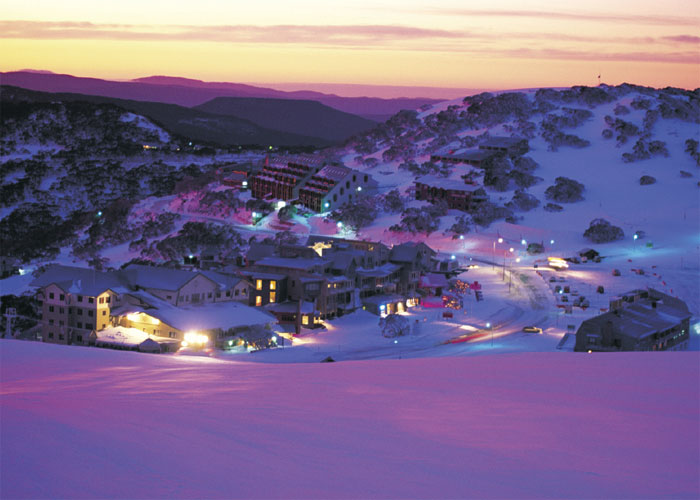
[MOUNT HOTHAM AT SUNSET, ALPINE NATIONAL PARK]
VICTORIA is possibly Australias most diverse state. In a half-hour drive from Melbourne you could be taking in mist-laden mountain ranges and fern gullies. In an hour you could be lying on a sandy beach in a sheltered bay, or surfing in the rugged Southern Ocean. In around four hours you could be standing on the edge of the immense desert that stretches away into Australias interior. In a country full of mind-numbing distances, nothing seems far away in Victoria.
More than five million people live in Victoria, with over four million in Melbourne. The city was only founded in 1835, as a kind of afterthought to Sydney and Hobart, but by the 1850s Victoria was off to a racing start. A deluge of people from all corners of the world fanned out across the state in response to the madness that was gold. It brought prosperity to Victoria and it also brought the certain wildness treasured in the states history uprisings like the Eureka Rebellion and bushrangers like Ned Kelly.
Two centuries later, Victoria has also recognised the richness of its natural landscape. To the west of Melbourne, beyond Geelong, a tract of cool-temperate rainforest unravels on its way to the vivid green Cape Otway, where a lighthouse stands on the cliff-top. The Great Ocean Road winds past here, en route to the states iconic limestone stacks, the Twelve Apostles.
On the other side of Melbourne, the land falls away into a series of peninsulas, islands and isthmuses. One leads to Wilsons Promontory, an untouched landscape of forested hills, tea-brown rivers and beaches strewn with enormous rust-red boulders.
The amber-hued Yarra Valley produces some of the countrys finest cool-climate wines, and from here the landscape begins its gradual climb up into the High Country, which becomes a vista of snowfields in winter.
Perhaps Victorias most cherished place is the Grampians, an offshoot of the Great Dividing Range. With a quarter of the states flora and 80 per cent of its Aboriginal rock art, the Grampians is a living gallery and a superb place for bushwalking and camping.

Population 5 624 100
Total land area 227 010 square kilometres
People per square kilometre 22.1
Sheep per square kilometre 94
Length of coastline 1868 kilometres
Number of islands 184
Longest river Goulburn River (566 kilometres)
Largest lake Lake Corangamite (209 square kilometres)
Highest mountain Mount Bogong (1986 metres), Alpine National Park
Hottest place Mildura (77 days per year above 30C)
Wettest place Weeaproinah (1900 millimetres of rain per year), Otway Ranges
Oldest permanent settlement Portland (1834)
Most famous beach Bells Beach, Torquay
Tonnes of gold mined 2500 (2 per cent of world total)
Litres of milk produced on Victorian dairy farms per year 7 billion
Quirkiest festival Great Vanilla Slice Triumph, Ouyen
Famous locals Germaine Greer, Barry Humphries Kylie Minogue
Original name for the Twelve
Apostles The Sow and Piglets
Best invention Bionic ear
First Ned Kelly film released The Story of the Kelly Gang, 1906 (also believed to be the worlds first feature film)
Local beer Victoria Bitter
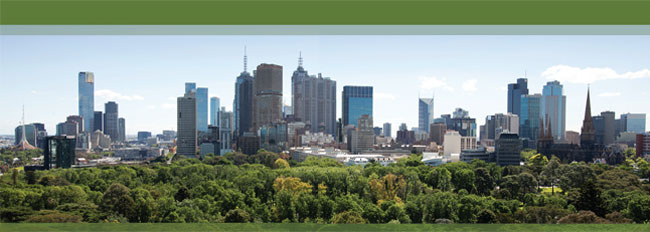
VISITOR INFORMATION
Melbourne Visitor Centre
Federation Square, cnr Flinders
and Swanston sts
(03) 9658 9658
www.visitmelbourne.com
M elbourne is renowned as Australias cultural capital. The city has a decidedly European feel, with neo-Gothic banks and cathedrals, much-loved department stores, art galleries and theatres around every corner. And hidden among these buildings is a string of vibrant laneways given over to cafe culture and boutique shopping. Yet Melbourne wouldnt be Melbourne without sport seeing a footy match at the MCG is a must.
Melbourne was born in 1835, and quickly became a city. With the boom of Victorias goldfields, unbelievable wealth was poured into public buildings and tramways, grand boulevards and High Victorian masterpieces.
Today Melbournes population of around 4 077 000 still enjoys the good life, at the very centre of which is a love of good food and fine dining. You can find comfort food in a cosy corner pub or meals with a view and a waterfront setting a trend in so many of the countrys coastal cities. Southbank, the shopping and eating precinct on the Yarra River, has become an extension of the city centre, while Docklands is the citys latest waterside area.
You might come to Melbourne for the dining and the shopping; the gardens and the architecture; the arts and music; the football, cricket and tennis. The city has as much diversity as it has suburbs, and at last check these were marching right down the Mornington Peninsula.
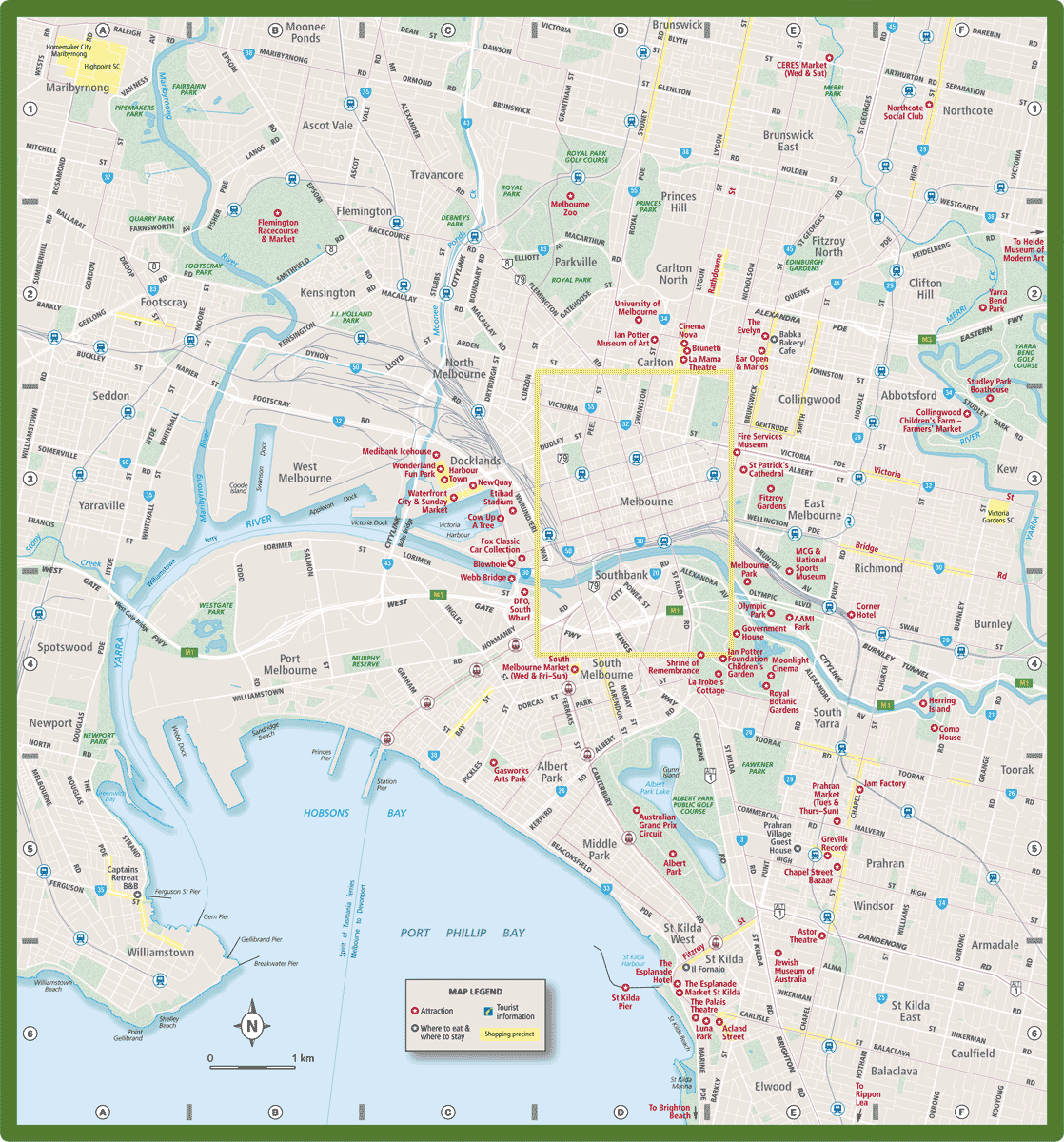
Melbournes central business district (CBD) lies on the north bank of the Yarra River. The train system runs a ring around the CBD and trams amble up and down most of its main streets, behind which lies a charming network of arcades and backstreets.
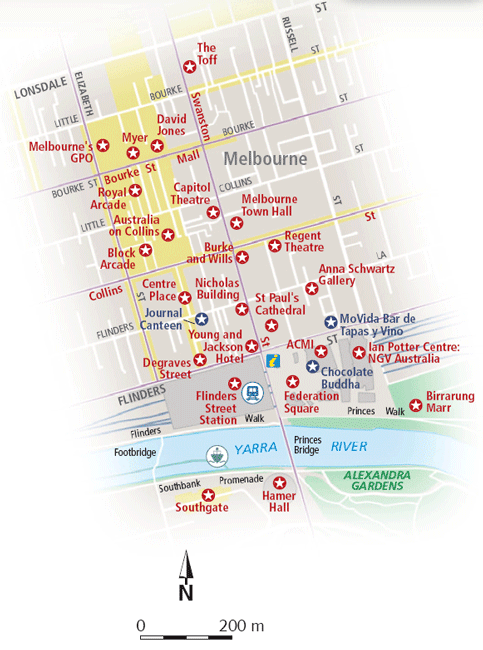
A station, a pub and a cathedral
Flinders Street Station is the CBDs major train station. Three other landmarks face it: Federation Square (see ), St Pauls Cathedral and the Young and Jackson Hotel. Across Swanston Street is the grandiose St Pauls Cathedral, built in 1891. Its mosaic interior is well worth a look.
Federation Square
Melbournes most significant building project in decades has a central piazza paved with 7500 square metres of coloured Kimberley sandstone, surrounded by bars, cafes, restaurants and shops. Down by the river, Federation Wharf is home to Rentabike (see ). Fed Squares must-visit attractions are the Ian Potter Centre: NGV Australia and the Australian Centre for the Moving Image.
Ian Potter Centre: NGV Australia
Indigenous art traditional and modern as well as colonial artists, such as Tom Roberts and Arthur Streeton, fill this gallery, dedicated to Australian art. The NGV Kids Corner is outstanding for pre-schoolers. Federation Sq; (03) 8620 2222; open 10am5pm TuesSun; general admission free. The National Gallery of Victorias international collection can be found on .
Australian Centre for the Moving Image (ACMI)
ACMI explores all guises of the moving image. Cinemas screen films and darkened galleries exhibit screen-based art and temporary exhibitions. Check the newspapers for film screenings or visit the website (www.acmi.net.au). Federation Sq; (03) 8663 2200, bookings (03) 8663 2583; open 10am6pm daily, open later for scheduled film screenings; general admission free.
Swanston Street
Walk down the east side and see a grand, tree-lined boulevard, significant historic buildings (see ) and quirky sculptures, while the west side is overcrowded with discount stores, souvenir shops and fast-food outlets. The street is closed to cars other than taxis.

